Lean, Mean, and
Green
How cutting food waste can make you green in more ways than one.
Brought to you by Zebra Technologies and ReSource Point of Sale

Food waste and material waste are mounting problems in the restaurant space, with a negative impact on the environment and the bottom line. The cost of discarded food is at an all-time high, as is the customer expectation for environmentally conscious behavior among food brands. The sources and consequences of food waste are complex and nuanced, but the vast majority of restaurant stems from one central problem—a misalignment between preparation and demand.
In this eBook, we’ll discuss the current status of global food waste, the restaurant industry’s contribution, key ways to cut food and material waste at the source, and how a green forward partner can help plant seeds for success and make your business bloom.
What We’ll Cover
- Defining Food Waste
- Quantifying the Food Waste Problem
- The Restaurant Industry’s Contribution
- Environmentally-Conscious Customers
- What to Do with Discarded Food
- How to Cut Food Waste at the Source
- A Supportive Partnership for the Sustainable Restaurant
- ReSource Point of Sale
- Resources for Donating and Recycling
About ReSource Point of Sale
ReSource POS was founded in Chicago and now serves customers in offices located in Illinois, Florida, Bosnia and Paraguay. We work to empower business owners in the retail and restaurant sectors to differentiate themselves with our best-in-class solutions and services.
ReSource POS by the Numbers
- First established in 2003
- 170+ full-time team members
- 5 international offices
- Supporting more than 12,500 endpoints
About Zebra Technologies
Zebra Technologies provides customers with cutting edge solutions to achieve operational visibility at every point in the process. Providing intelligent hardware with real time insight, Zebra’s solutions enable more informed decision making, efficiency and data maximization to meet your business needs.
Zebra by the Numbers
- Founded in 1969
- Offices in 120 countries
- 10,500 colleagues
- 10 industries
Defining Food Waste
Let’s lay the groundwork.
The first step in managing waste and becoming environmentally conscious is understanding what food waste is so that you can identify and mitigate it within your restaurant. Food waste is a general term that can be broken down into several distinct but interrelated concepts. Let’s take a look.
So, what is food waste?1
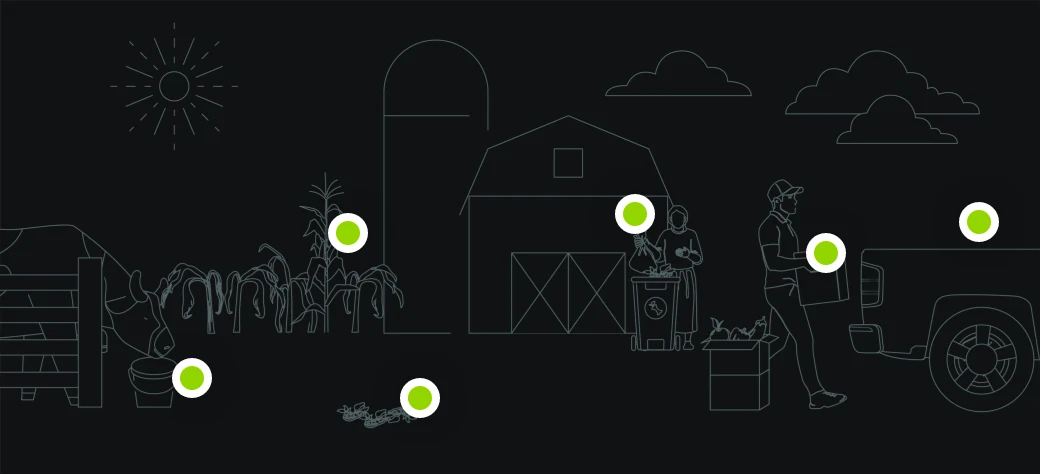
Excess food refers to food that is donated to feed people.
Food waste refers to food that was not consumed by humans and is discarded or recycled.
Food loss refers to unused product from the agricultural sector, such as unharvested crops.
Wasted food is food that was not used for its intended purpose and is managed in a variety of ways, such as donation to feed people, creation of animal feed, composting, anaerobic digestion, or disposal in landfills or combustion facilities.
Quantifying the Global Food Waste Problem
A mounting problem with more to be done.
80 billion pounds of food is wasted every year, which is about 30-40% of the country’s entire food supply.6
Every year, roughly 63 million tons of annual waste are not disposed of properly.7
1/3 of consumable food produced annually is discarded, lost, or degraded.8
In total, the overall financial cost of food waste is estimated at $1 trillion each year.9
Three main counterforces to food waste:
1
Regulation
Government policies can work to reduce waste through donation incentives, restrictions on disposal, and stringent food labeling requirements.
2
Consumer action
Consumers should raise awareness of the food waste issue while changing their own behaviors such as adjusting food storage practices, and efficient meal planning.
3
Business action
Businesses can work together to reduce waste by donating surplus food, utilizing sustainable packaging, and other recycling programs.
Can you imagine…
Nearly 2.5 billion tons of food are wasted every year. If we could recover just half of that we could end world hunger.10
The Restaurant Industry’s Contribution
A leading contributor to global food waste.
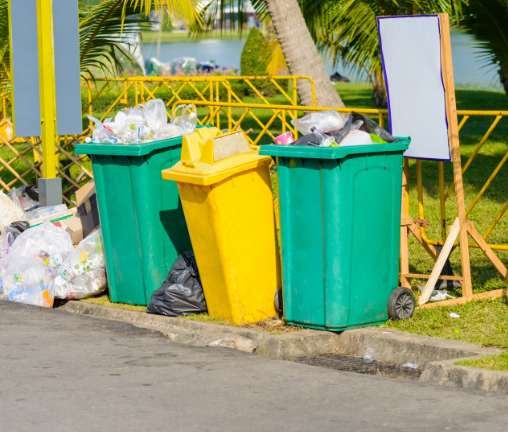
Restaurants account for a significant portion of America’s food waste. The U.S. restaurant sector generates 11.4 million tons of food waste annually, including 7.3 million tons from full-service restaurants and 4.1 million tons from limited-service restaurants. The full cost of this waste is over $25 billion.11
This waste is caused by a number of things, but most prominent is the simple fact that restaurant leaders buy more food than they need. Researchers observed that 4% to 10% of food purchased by restaurant leaders never gets to the customer,12 and half a pound of food is wasted per meal in restaurants.13 Not only do restaurants buy more food than they can manage to have consumed, but they throw out the majority of the product they purchase. Typically, 84% of unused food goes to waste in American restaurants.14
But restaurant purchasing and usage patterns aren’t the only culprits, customer habits contribute to waste as well. 30-40% of the food served to customers never gets consumed.15 Once served, the leftover food on the plate either goes home to the customers or goes in the trash. On average, American diners don’t finish 17% of the food they are served and leave behind 55% of their meal. This results in approximately 9% of food purchased at the restaurant being disposed of at the restaurant.16
Sadly, the vast majority of food waste doesn’t go to good use. About 85% of the food that isn’t used in an eating establishment is thrown out, while only a small percentage is donated or recycled.17 In 2019 alone, 66 million tons of wasted food were generated in the residential, food retail and food service sectors, and about 60% of this waste was sent directly to landfills.18
Addressing food waste isn’t just good—it is also good for business. Research indicates that eliminating food waste could fundamentally transform restaurant profitability. With the average cost to produce one meal at $20.4919 coupled with what we already know about percentage of waste in restaurants, $9.46 of what it cost to produce that meal is wasted. See how these numbers grow throughout a year.
*How Much Should I Budget for Eating Out?20
**What is the Average Restaurant Profit Margin?21
According to the USDA, the restaurant industry loses $162 billion annually due to food waste.22
Environmentally-Conscious Customers
Today’s customers put their money where their mouth is.
Customers have a number of motivations to take food waste disposal seriously including, but not limited to, world hunger and climate change concerns. But the number one reason consumers care about making changes to their food waste is to lower their own food costs.23 Though reducing food waste can benefit the planet in substantial ways, more people are concerned with how reducing food waste benefits them individually.
And customer sensitivity to food waste is on the rise. 72% of consumers say they are more conscious about their level of food waste today than they were just three years ago.24 Though their top concern is with saving their own money, 60% of consumers say they do feel guilty when food is wasted in their house.25
When it comes to dining out of the house, consumers do consider which restaurants care about food waste disposal and recovery. A study by Unilever showed 72% of American diners care about how restaurants handle their food waste, and 47% are willing to spend more money at restaurants with an active food recovery program.26
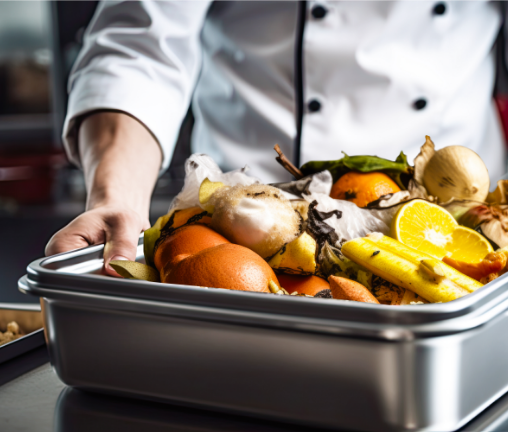
What to Do with Discarded Food
A productive hierarchy for handling food waste.
Cutting waste means saving money. For every dollar invested in food waste reduction, restaurants can gain approximately $8 of cost savings.27 Taking the initiative to cut food waste enables restaurants to obtain a potential $20 million in profit every year by adopting waste prevention solutions.28
But not all food waste is avoidable. Sometimes, despite our best efforts, we end up with wasted food? To assist restaurants in managing the waste they produce after taking preventative measures, the EPA developed this helpful food recovery hierarchy.
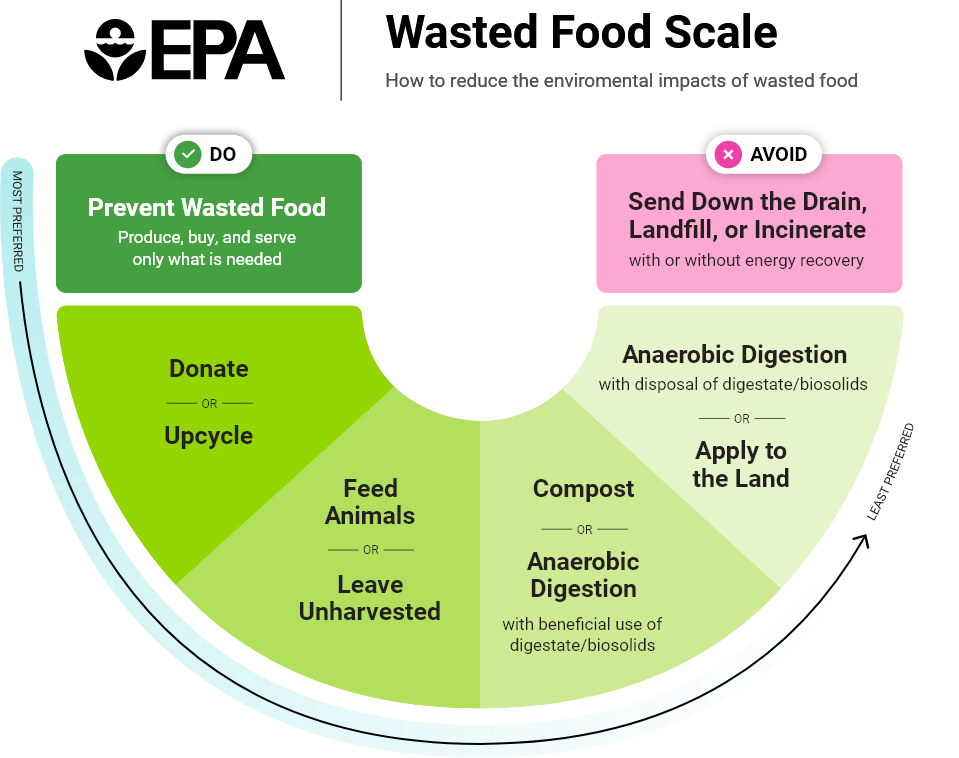
How to Cut Food Waste at the Source
Strategies to reduce food waste in restaurants.
Cutting food waste at the source has the power to radically enhance profitability for the modern-day restaurant while protecting the environment and better serving the community. But where should restaurants start? Despite its monumental financial and environmental impact, food waste can be significantly reduced through a few simple strategies that focus on aligning preparation and demand.
Restaurants can significantly reduce food waste by:29
Conducting periodic food loss and waste audits
Quantify where and how much food loss and waste are occurring using your system of record and anecdotal insight from crew across locations.
Accurately predicting food orders
Embrace a point of sale that analyzes demand patterns and consider implementing predictive ordering technology to improve the accuracy of projections that drive procurement and preparation.
Implementing data-driven inventory management
Enhance and optimize your inventory management practices with a solution that automates workflows and provides insight into historical and future usage.
Rightsizing portions
If consumers are consistently not consuming their entire meals, consider adjusting your standard portion sizes, or offering multiple size options based on customer preference.
Harnessing inventory-tied LTOs
To increase sales for items that represent outsized inventory, consider adding inventory-tied limited time offers. These LTOs will offer temporary discounts aimed at selling inventory before it becomes waste.
Reducing kitchen waste
Another source of waste is the busy restaurant kitchen. Use food labeling, temperature indicators, and food safety protocols to reduce spoilage by better isolating and controlling sources of kitchen waste.
Developing eco-friendly solutions
In addition to food waste, cut costly material waste by using reusable serving items for in-restaurant diners, providing recyclable packaging for go-to orders, and embracing eco-friendly printing.

A Supportive Partnership for the Sustainable Restaurant
Zebra Suite of Solutions: Powerful solutions for the sustainable restaurant.

Zebra delivers technologies that empower restaurants to reduce food waste in their procurement and kitchen processes while also reducing their material waste.
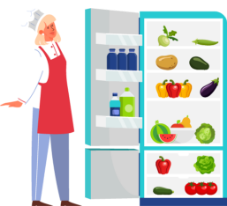
Handle food properly.
- Food labeling: Provide customers with the information they need to make the best ordering decisions.
- Food safety: Make food last and keep food fresh with proper protocols and safety methods.
- Food temperature indicators: Maintain proper temperature to keep food fresh and prevent costly spoilage.

Manage food efficiently.
- Record keeping: Quantify food loss with a robust record keeping system to track food orders and determine how much product you need to order.
- Inventory management: Align inventory procurement with demand patterns, and cut and quantify wastage.
- Order accuracy: Ensure order accuracy with a POS technology that empowers your crew to get it right the first time, and ramp up timely LTOs.
- Data management: Understand the nuances of demand within your restaurant across food items, dayparts, and seasons.

Use material sustainably.
- Eco-friendly printing: Put your best foot forward by using environmentally friendly printing methods.
- Plastic automation system: Use reusable plastic to reduce material waste, track reuse, minimize costs, and create audit trails.
ReSource Point of Sale
A green partner for greener restaurants.
Sustainable practices for the restaurant are good for the planet and the business. At ReSource Point of Sale, we help fast-growing restaurants reduce food and material waste through comprehensive, integrated solutions that meet their environmental objectives and enhance their financial success. We are proud to partner with Zebra, who delivers solutions that power the sustainable restaurant.
With a highly collaborative approach, we work with you to understand and achieve your restaurant’s goals—from initial solution design to rollout and ongoing support.
Solution Design
Create a unique suite of solutions for your individual needs
Install and Integration
Promote speed, accuracy, and efficiency
Training and Support
Collaborative approach to achieve your business goals
Customer Satisfaction
Ever-evolving solutions to breed loyalty
Resources for Donating and Recycling
Below you’ll find resources on where you can donate your excess food and how to properly compost your food scraps.
Donations
Find out where you can donate food near you!
Composting Rules
Make sure you are following the proper rules when composting your food waste.
Too Good to Go
Purchase surplus food to prevent spoilage and excess waste.
Rescuing Leftover Cuisine
Donate to a charitable cause as they redistribute excess food to those in need.
How can we help you?
Allow us to put our commitment to client success to work for your business.